 The D-Xylose Absorption Test in Malabsorption Syndromes | NEJM
The D-Xylose Absorption Test in Malabsorption Syndromes | NEJMUser links Top Absorption Xylose Test To help assess your ability to absorb and help determine the cause of When you have symptoms of malabsorption, such as persistent feces and fats Tempered blood samples extracted from a vein in the arm and fast tempered urine collection for 8 hours and avoid high-pitched foods such as jams, fruits and pastries, for 24 hours before the test. Ask your healthcare provider if there is any change in your medications you should make. You may be able to find the results of your test on the website of your laboratory or patient portal. However, you are currently in Lab Tests Online. It may have been directed here by your laboratory's website to provide you with background information on the test(s) you had performed. You will have to go back to your laboratory website or portal, or contact your doctor to get the results of your test. Online Laboratory Testing is an award-winning patient education website that provides information on laboratory testing. The content of the site, which has been reviewed by laboratory scientists and other medical professionals, provides general explanations of the results that could mean for each test listed on the site, such as what a high or low value might suggest to your doctor about your health or health status. Reference ranges for your tests can be found in your laboratory report. They are typically on the right of their results. If you do not have your lab report, consult your healthcare provider or the lab that performed the test(s) to obtain the reference range. The results of the laboratory tests are not significant by themselves. Its meaning comes from comparison to reference ranges. Reference ranges are expected values for a healthy person. Sometimes they are called "normal" values. By comparing your test results to the reference values, you and your healthcare provider can see if any of your test results fall outside the expected range of values. Values that are beyond the expected ranges can provide clues to help identify possible conditions or diseases. Although the accuracy of the laboratory tests has evolved significantly in recent decades, there may be some lab-to-lab variability due to differences in the testing equipment, chemical reagents and techniques. This is a reason why so few reference ranges are provided on this site. It is important to know that you should use the range provided by the laboratory that performed your test to assess whether your results are "within normal limits. "For more information, read the article. Xylose (d-xylose) is a simple () sugar that is usually easily absorbed by the body. This test determines how well someone absorbs xylose. Measure the level of xilose in the blood and urine after a standard amount is ingested to evaluate the person's ability to absorb carbohydrates in general. The body digests food in three stages: the first proteins, fats and carbohydrates are decompose in the stomach by acids and then in small intestines by pancreatic and liver enzymes. Then they are absorbed, mainly in small intestines, and finally the nutrients are transported through the body and used or stored. If there are not enough bile or pancreatic enzymes available, then carbohydrates and other foods cannot be digested properly. If a condition prevents the intestines from absorbing the nutrients, then they are lost by excretion in the feces. In both cases — inappropriate digestion or absorption — the affected person may experience symptoms associated with and, in severe cases, symptoms and vitamin deficiency. This test is not routinely ordered and is not widely available. Several major health organizations, such as the American Gastroenterology Association, the World Gastroenterology Organization and the British Society of Gastroenterology, do not include this test in their guidelines to assess possible malabsorption. How does the sample collect for the test? The xylose absorption test is a procedure that involves fasting before testing and emptying the bladder at the beginning of the test (this urine is not saved). A sample of fasting blood is obtained by inserting a needle into a vein into the arm and then given a standard dose of xylose dissolved in drinking water. Typically, the dose is 25 grams of xylose, but if the person cannot tolerate this amount, a dose of 5 grams can be used. For children, the dose is adjusted by weight. The person is asked to rest in silence. Another blood sample is collected at 2 hours (1 hour for a child). All urine is collected for 5 hours, from the time the dose is given. Fasting blood, tempered blood and 5-hour urine samples are tested for xilose. Is there any test preparation needed to ensure the quality of the sample? Fast for 8 hours and avoid high food in a pentose, such as jams, fruits and cakes, for 24 hours before the test. Ask your health care provider if there is any changes to the necessary medication. The xylous absorption test can be ordered to help determine whether a person is normally absorbing and distinguishing between caused by insufficient pancreatic enzymes or by dysfunction of the intestines. It can be ordered as a follow-up test if other test results, like, suggest malabsorption but do not reveal their cause. This is not a routine test. Their use and availability have decreased over time. The main health organizations, such as the American Gastroenterology Association, the World Gastroenterology Organization and the British Society of Gastroenterology, do not include this test in their guidelines to assess possible malabsorption. This test can be performed when a person has and in such a way: Treatment can be ordered when a health care professional wants to determine whether the patient's intestines are normally absorbing and/or wants to distinguish between the different possible causes of malabsorption. With the xylous absorption test procedure, the high blood and urine levels of xilose are normal. They indicate good xylose absorption by the intestines. This suggests that the symptoms of the tested person are probably due to another cause, such as or insufficiency. High blood levels but low urine levels can be seen in someone with . In this case, blood levels will be used to evaluate the individual for . Low blood levels and urine xilose indicate poor absorption. A variety of conditions that affect digestion and absorption can cause decreased xylose levels. These may include overcrowding in the intestines, infections, a shortened intestine (such as surgery) and . Depending on a person's clinical situation, an abnormal xylous absorption test can be followed by additional blood or feces tests to try to isolate the cause and/or a small elbow to see the intestinal cells. Several drugs may affect the results of the tests, including aspirin, digitalis, MAO inhibitors, metformin, nalididic acid, opium alkaloids, atropin, and indomethacin., exercise and rate that the thrust of the stomach may affect the results of the tests. Some people may experience nausea, vomiting, or diarrhea of the xilose dose. Samples can be collected in the office of a health doctor, but most often the test is performed in a sample drawing station (frabotomy). Sample analysis should be done in a laboratory and it may be necessary to send to a .Yes. To accurately interpret the absorption and excretion during this period of time, you must keep all your urine. This xilose measurement in a fast sample is used as a reference base. It should be negative or very low before receiving the dose of xylose. Generally, only if the health care provider considers that the first set of test results was compromised in some way, as a result of a interferent medication or because the tested person could not tolerate and retain the normal xylous dose (nausea and vomiting). It can cause vitamin deficiency because vitamins cannot be absorbed normally and because liposoluble vitamins such as A, E, K and D can be "trapped" and eliminated with fat in fat feces. On this siteTests: , Conditions: , , , , , , Sources used in the current review Diagnosis and Clinical Management of Henry by Laboratory Methods. McPherson R, Pincus M, Eds. Philadelphia, PA: Saunders Elsevier: 2011, Pp 322-323.(December 16, 2014) Goebel S. Malabsorption. Medscape Reference. Available online at http://emedicine.medscape.com/article/180785-workup#c5. Accessed to May 2016. Haldeman-Englert C. (Updated 2014 March 14th). D-xylose absorption. Medline More Medical Encyclopedia [Online Information]. Available online at http://www.nlm.nih.gov/medlineplus/ency/article/003606.htm. Access May 2016.(© 1995-2016). Xylose Absorption Test (Dosis Adult - 25g). Mayo Clinic Mayo Medical Laboratory [Online Information]. Available online at http://www.mayomedicallaboratories.com/test-catalog/Clinical+and+Interpretive/57321. Access May 2016.(© 2016). Xylose Absorption Test (Adult - 5g doses): 0020615. ARUP Laboratory Test Directory [Online Information]. Available online at http://www.aruplab.com/guides/ug/tests/0020615.jsp. Accessed to May 2016. Lehrer J. (Updated 2014 11 August). Malabsorption. Medline More Medical Encyclopedia [Online Information]. Available online at http://www.nlm.nih.gov/medlineplus/ency/article/000299.htm. Accessed to May 2016. Sources used in Previous Reviews Dugdale, D. (Updated 2010 January 20th). D-xylose absorption. Medline More Medical Encyclopedia [Online Information]. Available online at http://www.nlm.nih.gov/medlineplus/ency/article/003606.htm. Accessed to June 2011.(© 1995-2011). Unit code 91713: Xylose Absorption Test (Digital Dossy - 25g). Mayo Clinic Mayo Medical Laboratory [Online Information]. Available online at http://www.mayomedicallaboratories.com/test-catalog/Overview/91713. Accessed to June 2011.(© 2006-2011). Xylose Absorption Test (Adult - 5g doses): 0020615. ARUP Laboratory Test Directory [Online Information]. Available online at http://www.aruplab.com/guides/ug/tests/0020615.jsp. Access to June 2011. Dugdale, D. (Updated 7 July 2010). Malabsorption. Medline More Medical Encyclopedia [Online Information]. Available online at http://www.nlm.nih.gov/medlineplus/ency/article/000299.htm. Access to June 2011. Delgado, J. and Grenache, D. (Updated 2010 November). Malabsorption. ARUP Consult [Online Information]. Available online at http://www.arupconsult.com/Topics/Malabsorption.html?client_ID=LTD. Accessed to June 2011.Ruiz, A. (Revised 2008 January). Malabsorption. Merck Manual for Healthcare Professionals [Online Information]. Available online at http://www.merckmanuals.com. Access to June 2011. Pagana, K.D. " Pagana, T.J. (© 2011). Mosby's Diagnostic and Laboratory Test Reference 10th Edition: Mosby, Inc., Saint Louis, MO. Pp 1054-1055. Clarke, W. and Dufour, D. R., Editors (© 2006). Contemporary practice in clinical chemistry: AACC Press, Washington, DC. Pp 304-305.Wu, A. (© 2006). Tietz Clinical Laboratory Test Guide, 4th Edition: Saunders Elsevier, St. Louis, MO. Pp 1148-1151. Ask a Laboratory Scientist This form allows patients to ask specific questions about laboratory tests. Your questions will be answered by a laboratory scientist as part of a volunteer service provided by one of our partners, American Society for Clinical Laboratory Science. Please allow 2-3 working days for an email response from one of the volunteers on the consumer information response team. Find Us on Social Media: Footer Menu
D-its absorption of axes D-xylose absorption is a laboratory test to check how well the intestines absorb a simple sugar (oxilose D). The test helps to detect whether the nutrients are being properly absorbed. How the Test is Performed The test requires a sample of blood and urine. These tests include: There are several ways to perform this test. A typical procedure is described below, but be sure to follow the specific instructions given to you. You will be asked to drink 8 ounces (240 ml) of water containing 25 grams of sugar called d-xylose. The amount of d-xylose coming out in the urine will be measured for the next 5 hours. You may have a blood sample collected at 1 and 3 hours after drinking the liquid. In some cases, the sample can be collected every hour. The amount of urine produced for a period of 5 hours is also checked. Your healthcare provider will tell you how to collect all urine for a 5-hour period. How to Prepare for the Test Do not eat or drink anything (even water) for 8 to 12 hours before the test. Your provider will ask you to rest during the test. A lack of restriction of activity can affect the results of the tests. Your provider may tell you to stop taking certain medications that may affect test results. Medicines that may affect test results include aspirin, atropine, indomethacin, isocarboxazid and fenelzine. Do not stop taking any medication without talking to your provider first. How the Test will FeelWhen the needle is inserted to draw blood, you may feel moderate pain, or just a feeling of puncture or itching. Then there may be some agitation. The urine is collected as part of normal urination without any discomfort. Why the Test is Performed Your provider may order this test if you have: This test is mainly used to check if the nutrient absorption problems are due to an intestinal disease. It is done much less often than in the past. Normal Results A normal result depends on how much D-xylose is given. In most cases, the results of the test are positive or negative. A positive result means that D oxide is found in the blood or urine and is therefore being absorbed by the intestines. Normal value ranges may vary slightly between different laboratories. Some laboratories use different measurements or test different samples. Talk to your provider about the meaning of the specific results of your test. What Abnormal Results Mean Better than normal values can be seen in: There is little risk of taking your blood. The veins and arteries vary in size from one person to another and from one side of the body to another. Taking blood from some people can be more difficult than others. Other risks associated with blood extraction are mild, but may include: Considerations Multiple tests may be needed to determine the reason for . Alternative namesTest tolerance xylose; Diarrhea - xylose; Malnutrition - xylose; Spin - xylose; Celiac - xyloseImagesReferences Floch MH. Evaluation of the small intestine. In: Floch MH, Ed. Netter's gastroenterology. Third Ed. Philadelphia, PA: Elsevier; 2020:chap 62.Semrad CE. Focus the patient with diarrhea and malabsorption. In: Goldman L, Schafer AI, Eds. Goldman-Cecil Medicine. 26th ed. Philadelphia, PA: Elsevier; 2020:chap 131.Siddiqi HA, Salwen MJ, Shaikh MF, Bowne WB. Laboratory diagnosis of gastrointestinal and pancreatic disorders. In: McPherson RA, Pincus MR, eds. Diagnosis and Clinical Management of Henry by Laboratory Methods. 23rd ed. St Louis, MO: Elsevier; 2017:chap 22.Review Date 1/15/2020 Updated by: Michael M. Phillips, MD, Clinical Professor of Medicine, The George Washington University School of Medicine, Washington, DC. It was also reviewed by David Zieve, MD, MHA, Medical Director, Brenda Conaway, Editorial Director and A.D.A.M. Editorial team. for the Health Content Provider (www.urac.org). URAC is an independent audit to verify that A.D.A.M. follows rigorous standards of quality and accountability. A.D.A.M. is one of the first to make this important distinction for online health information and services. Learn more about A.D.A.M.'s and A.D.A.M. is also a founding member of Hi-Ethics. This site meets the HONcode standard for reliable health information: . The information provided in this document should not be used during any medical emergency or for the diagnosis or treatment of any medical condition. A licensed doctor should be consulted for the diagnosis and treatment of any and all medical conditions. Call 911 for all medical emergencies. Links to other sites are only provided for information -- they are not backed up by those other sites. Copyright 1997-2021, A.D.A.M., Inc. Duplication for commercial use must be authorized in writing by ADAM Health Solutions.

D- Xylose Absorption Test
D- Xylose Absorption Test - ppt download
D-xylose absorption | Lima Memorial Health System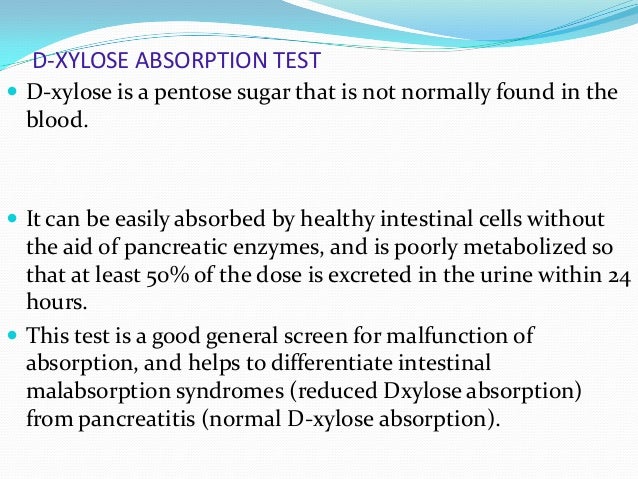
Malabsorption
The D-Xylose Absorption Test in Malabsorption Syndromes | NEJM
D- Xylose Absorption Test
Table 3 from INTESTINAL ABSORPTION TEST WITH THE USE OF D-OXYLOSE. I. ITS APPLICATION ON NORMAL JAPANESE SUBJECTS. | Semantic Scholar
D-Xylose Absorption Test (Gastric function test) - YouTube
The D-Xylose Absorption Test in Infancy | Archives of Disease in Childhood
PDF) D-Xylose absorption as a measurement of malabsorption in poult enteritis and mortality syndrome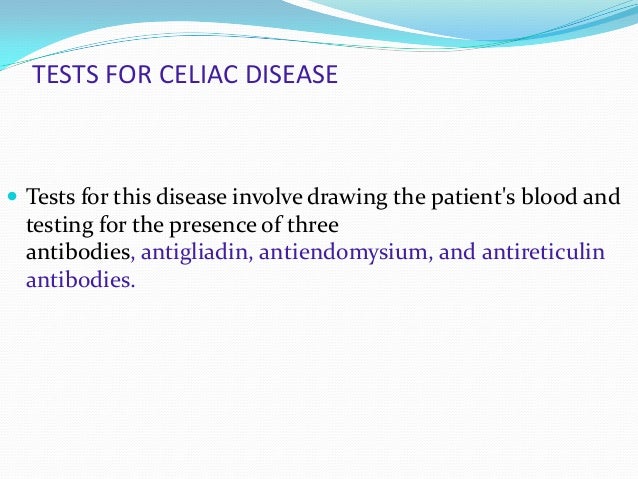
Malabsorption
PDF) D-Xylose absorption as a measurement of malabsorption in poult enteritis and mortality syndrome
D- Xylose Absorption Test - جامعة الملك سعود PowerPoint Presentation, Free Online Download PPT RYASYG
Malabsorption syndromes
d-Xylose absorption test | Semantic Scholar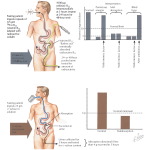
Evaluation of the Small Bowel: D-Xylose Absorption Test and Schilling Test
D-Xylose Absorption Test
D-Xylose Absorption Test: Uses, Results, Risks and More
d-Xylose absorption test | Semantic Scholar
Intestinal Absorption of D-Xylose in Man | NEJM
Use of the D-xylose absorption test in monitoring intestinal allografts - D -Scholarship@Pitt
Schilling TestUrinary D-Xylose Test Radiologic Examination Use -determine the cause for cobalamin malabsorption -assess the integrity of stomach, pancreas, - ppt download
Modification in the xylose absorption test as an index of intestinal function. | Gut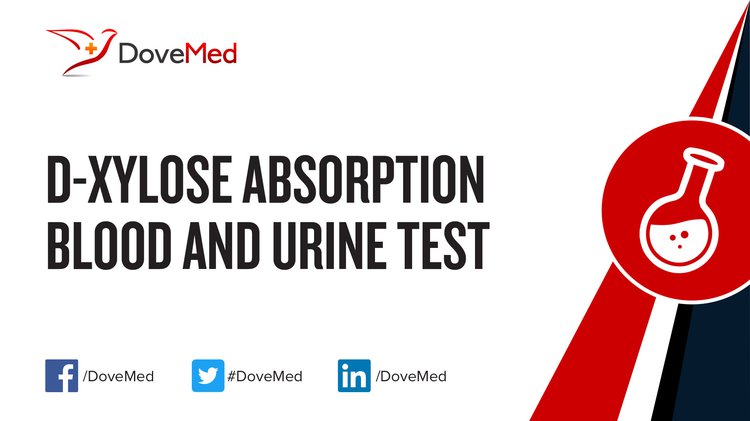
D-Xylose Absorption Blood and Urine Test
d-Xylose absorption test | Semantic Scholar
Xylose Absorption Test Market Statistics 2020 by Key Driving Factor, Dazzling Growth, Vital Players, Regions, Segments, Diagnosis, Treatment & End-User Outlook to 2026 | Medgadget
Intraluminal Small-Intestinal Utilization of d-Xylose by Bacteria
The D-Xylose Absorption Test in Malabsorption Syndromes | NEJM
PDF) D-Xylose absorption and disposition in patients with moderately impaired renal function
Intraluminal Small-Intestinal Utilization of d-Xylose by Bacteria
DR.RAHIMI Maldigestion and Malabsorption. The only clinical situations in which absorption is increased are hemochromatosis and Wilson's disease, in which. - ppt download
Xylose: absorption, fermentation, and postabsorptive metabolism in the pig - Engormix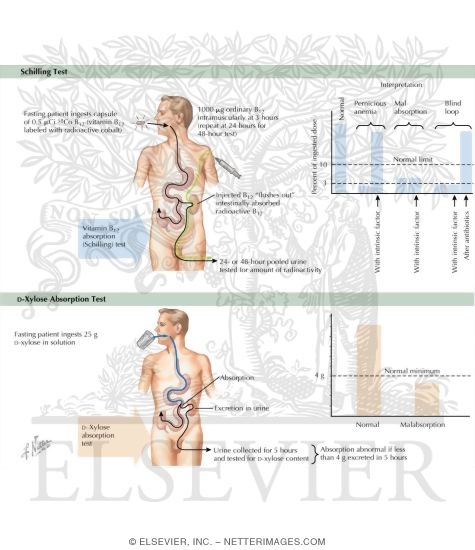
Evaluation of the Small Bowel: D-Xylose Absorption Test and Schilling Test
Table 4 from INTESTINAL ABSORPTION TEST WITH THE USE OF D-OXYLOSE. I. ITS APPLICATION ON NORMAL JAPANESE SUBJECTS. | Semantic Scholar
The D-Xylose Absorption Test in Malabsorption Syndromes | NEJM
Sugar Absorption Tests, with Special Reference to 3-0-Methyl-d-Glucose and d -Xylose
Limitations of the Usefulness of the d-Xylose Absorption Test
Interaction of insulin with prokinetic drugs in STZ-induced diabetic mice
PDF) The serum D-xylose test as a useful tool to identify malabsorption in rats with antigen specific gut inflammatory reaction | Danielle Antunes, Patrícia Paschoal, Sylvia Campos, Gerlinde Teixeira, and Janilda Da
THE D-XYLOSE ABSORPTION TEST
 The D-Xylose Absorption Test in Malabsorption Syndromes | NEJM
The D-Xylose Absorption Test in Malabsorption Syndromes | NEJM






























Posting Komentar untuk "d xylose absorption test"